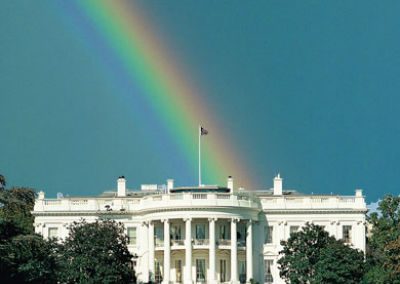Plan, inspire, create change.
Early last month, the White House hosted its first ever LGBTQ Leaders of Color Summit. Over 60 LGBTs of color were present, meeting, planning, inspiring, and creating change for our community.
The three day event brought together some of the greatest minority LGBT organizations, people, and politicians. Organizations such as the TWOCC (Trans Women of Color Collective) and Casa Ruby were present. Heroes and icons such as Miss Major Griffin-Gracy and Ruby Corado were honored and celebrated.
The summit tackled some of the greatest issues facing the LGBT community, and those that directly affect LGBTs of color. Focusing on topics of discrimination, homelessness, and employment, the guests were invited to voice their questions, concerns, and needs openly.
Through this conference, they were given the opportunity to draft policy recommendations based on an intersectional framework (systems of discrimination or oppression).
With marriage equality hanging in the balance, it was tremendously important for a meeting such as this to take place. As LGBTs, our community spoke openly about our concerns about health care, equal rights, employment discrimination, and more. As people of color, our concerns about homelessness, employment opportunities, and our safety were also addressed.
The LGBT community faces some of the harshest issues in our country. A staggering twenty per cent of homeless youth are LGBT, having been kicked out or disowned by their family.
Familial violence is not uncommon, sadly. According to the National Coalition for the Homeless, once LGBT youth become homeless, they are at a greater risk of victimization (abuse, sexual abuse and violence, hate crimes, etc.).
LGBTs of color face not only racial discrimination, but discrimination for their orientation/identity/gender expression. Many LGBTs of color feel as though they must struggle and fight that much more since they face two severe prejudices.
According to an article by the Center for American Progress that was published in 2012, LGBTs of color have higher rates of unemployment or underemployment. They also have lower rates of pay with higher rates of poverty.
In addition, LGBT youths of color tend to have lower levels of education, and higher rates of homelessness compared to other youths. It is interesting to note that these lower rates still hold true when compared to Caucasian LGBTs.
Colorlines published an article in 2011 stating that seventy per cent of victims of anti-LGBT attacks and murders are LGBTs of color.
The statistics speak for themselves. Although the LGBT community has made tremendous strides forward since Stonewall in 1969, we are still far from true equality.
Our community (as a whole) still suffers oppression and inequality. LGBTs of color suffer that even more so: LGBTs of color are not equal with their Caucasian counterparts.
With our community facing such violence and oppression, political and social changes are desperately needed. The first ever LGBTQ Leaders of Color Summit held at the White House is hoped to be the first giant step in the right direction.
